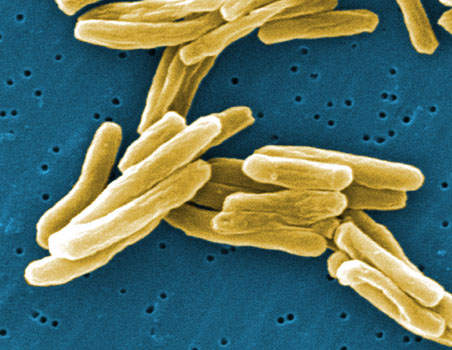New Zealand TB drug candidate selected (2012)
In late 2012 a promising New Zealand compound targeting treatment-resistant tuberculosis (TB) was selected as a drug candidate by international non-profit drug developer the Global Alliance for TB Drug Development (TB Alliance).

New drug candidate TBA-354 was designed by scientists from the Auckland Cancer Society Research Centre (ACSRC) and Maurice Wilkins Centre in partnership with the TB Alliance and University of Illinois at Chicago. The TB Alliance expects to complete preclinical studies by early 2013, and then seek permission from the US Food and Drug Administration to begin human trials.
TB is second only to HIV/AIDS as the greatest infectious killer worldwide. While most cases and deaths occur in low and middle income countries, it is a major health concern in the Asia-Pacific region. Treatment regimens are complex, lengthy and challenging to follow and the disease is developing resistance to current antibiotics. If a new drug proves more effective than current treatments it may reduce the duration, cost and side effects of treatment.
Laboratory studies to date have been very promising, with TBA-354 proving much more potent and broad-spectrum than PA-824, the first-generation compound it was designed to improve upon. TBA-354 and PA-824 are members of the first new class of drugs developed for TB in nearly fifty years and the first designed to attack the persistent form.
the TB Alliance contracted the New Zealand scientists to develop second-generation compounds to overcome some of its known limitations. The New Zealanders optimised each part of the drug, and in the process developed a new method of synthesis that will simplify and reduce the cost of producing drugs of this class.
“TBA-354 is an improved, second-generation version of PA-824,” says Professor Bill Denny,
ACSRC Co-Director and a Maurice Wilkins Centre principal investigator. “It is much more
potent than PA-824, longer lasting, and has greater activity against resistant strains. Recent
trials show that PA-824 can dramatically shorten the treatment period for TB, and it’s
encouraging that in TBA-354 we have a compound that is clearly superior to it.”
“This has been an excellent and productive international collaboration, across groups with
different skills, where we have learned much that we can apply in future,” says Associate
Professor Brian Palmer of the ACSRC and Maurice Wilkins Centre, who led the project’s
chemistry team of Drs Adrian Blaser, Iveta Kmentova, Hamish Sutherland and Andrew
Thompson.
“New Zealand has an outstanding reputation in drug discovery and it’s exciting to see the
ACSRC’s expertise in cancer drug development being applied to the fight against one of
the most devastating infectious diseases in the world,” says Centre Director Professor
Rod Dunbar.
Image: Micrograph of Mycobacterium tuberculosis, the bacterium that causes tuberculosis. Image courtesy of Dr Ray Butler and Janice Carr (Centres for Disease Control).